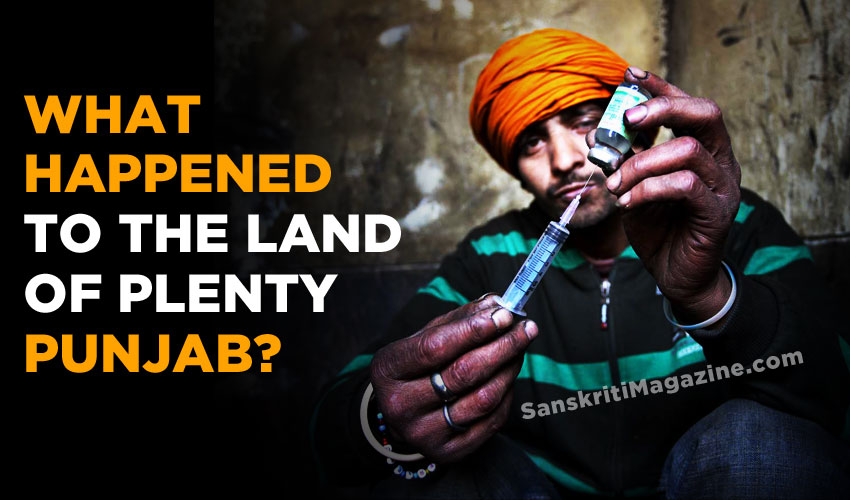PICK UP any newspaper published in Punjab for the past one month and the top story is likely to be Operation Clean. Since mid-May, the state government’s sudden interest in curbing the drug trade through the operation has resulted in more than 5,000 arrests (an average of 100 per day) as well as the seizure of large quantities of heroin, opium, poppy husk and other illicit drugs.
Has it stopped the trade? Will it purge heroin and drug addiction from the Punjab map? Officials seem to believe so, but the truth behind the clampdown is as dangerous as addiction itself. The state government is arresting addicts and putting them behind bars allegedly after planting the drugs on them. The government has made it clear that it wants to stub the demand because going after the supply might mean axing itself in the knee.
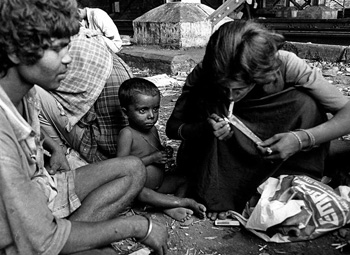
Politicians, locals in border villages and anti-drug agency sleuths believe that several top politicians are involved. So, the government prefers to try to curb the demand to protect its own, and the stakes are high — it is a multi-million dollar racket.
Tehelka warned of the rising epidemic in Punjab (The Poverty of Plenty by Vijay Simha, 2 October 2010). It led independent journalist Paranjoy Guha Thakurta to make a film on this ‘sixth river of Punjab’ that is bleeding its youth dry. But, the racket continued and the addiction was given a free rein to spread.
So, what has changed now?
The decision to start the clean-up drive coincides with the defeat of senior BJP leader Arun Jaitley from Amritsar in the recent Lok Sabha Election. Congress candidate Captain Amarinder Singh’s victory was an embarrassment for the BJP, and jeopardised its alliance with Punjab Chief Minister Parkash Singh Badal and his Shiromani Akali Dal (SAD). Despite the anti-incumbency wave against the Congress across the country, it was astounding that the party won from Amritsar, Ludhiana and Jalandhar.
Many leaders believe that the sad government paid a price for ignoring the rampant drug problem. Or maybe even abetting it.
The Drug Villages
The villages along the Indo-Pak border at Wagah, some with arable land across the Indian fence, bear the inglorious distinction of being labelled ‘drug villages’ — there is trafficking, trade and abuse of heroin, among other drugs. The proximity to the border creates a strategic location for drug trafficking. So does a history of smuggling in arms and gold.
The two most notorious are Havalia and Dauke, hardly 10-15 km away from the heavily-guarded checkpost in Wagah.
But it is not just smuggling and trafficking, most of these villages’ youth are heroin addicts. In Havalia and Dauke, the villagers say that at least 300 youth of the average population of 1,000 are addicted to some drug, mostly heroin.
You cannot walk five steps near Wagah without bumping into one of the sleuths of the following intelligence agencies — Directorate of Revenue Intelligence (DRI) of the Customs department, Intelligence Bureau (IB) of the Ministry of Home Affairs (MHA), Narcotics Control Bureau (NCB), also of the MHA, Punjab’s State Special Operations Cell (SSOC) and so on. Still, the drug trade flourishes here in every possible form.
The drugs are smuggled over the border, ‘mules’ carry consignments to larger cities and onwards to international destinations, and they are also processed close by and sold to local youth. But, the government has decided to focus on the drug users and try to stop demand rather than curb the supply.
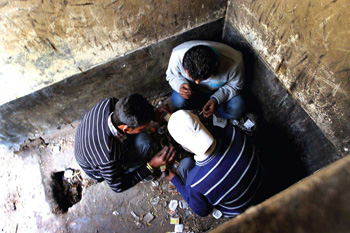
In Havalia, the sarpanch’s father Amreek Singh, 80, smiles while admitting that he was a gold smuggler in the 1980s. In Amritsar (35 km away from Wagah), gold smuggling controlled the economy; arms and drugs came later. In the 1980s, the price of gold tripled from Rs 1,150 to Rs 3,400 for 10 gm. Amreek Singh says that he used to smuggle in about 2-4 kg at a time, earning about Rs 15,000 a kg. When the fence was put up around 1990, the price of smuggled gold shot up.
Use of opium has existed here for decades — something that the British kept a check on. Though gold established the cross-border smuggling route, some villagers found better profits in smuggling arms, opium and then heroin instead of gold. The recent action against the drug trade has shut people up about the economics and stars of this multi-million dollar enterprise.
Amreek Singh’s father left him about 10 acres. The gold business helped him add more acreage and some fine houses, making him one of the most influential people in Havalia.
But the most influential is the Chootha da Dera (house of the Choothas). The house is located near Sarai Mann Khan village. The house — in fact, two of them — are almost palatial for a village and it seems private, paved roads were being constructed from the main road. But, the construction has been abandoned midway and construction material lies unattended.
The houses also appear abandoned — one of them is totally empty, and the other has a few women who don’t answer doorbells but peer from the windows and shoo callers away.
At Sarai Mann Khan police station, the cops say the Choothas are absconding because warrants are out for their arrest. Inspector Rajwinder Kaur took over as the station house officer just a week ago and keeps a lookout for anyone enquiring about the Choothas.
“They have influential friends,” says a villager on the condition of anonymity.
“They are close to SAD MLAs Gulzar Singh Ranuke and Harmeet Singh Sandhu. Then there is Bikram Singh Majithia, the deputy chief minister’s brother-in-law. The Choothas are seen with these people, so who will complain against them? In one instance, Sant Nirmal Dev had pleaded with them to quit this trade but they refused saying they never invited drug addicts to come to them.”
A local policeman adds, “The eldest, Malkit Singh Chootha, controls the business with the help of his brothers Pratap, Samsher and Gurjeet. They all vanished a few days ago. One wonders how they got a tip-off that they were being sought and just after that the sho was changed at Sarai Mann Khan police station.”
Every villager provides the same figure for how much money the trade brings in — for each kg, Rs 1 lakh to buy the drugs from Pakistani manufacturers and Rs 50,000-70,000 to smuggle it across the border. This is for heroin that has 40-60 percent purity. The drugs are then carried by ‘mules’ in buses and trucks and are impossible to track unless there is specific information.
An MHA official speculates that the heroin busts in Punjab are about 10 percent or less of the total heroin trade in the state — it is impossible to say how much is actually sent through Punjab.
But one thing is for sure. The largest amounts of heroin pass through the neighbouring districts of Amritsar and Tarn Taran.
The Modus Operandi
After all these years, the modus operandi of the smugglers hasn’t changed. Pakistani smugglers swim or walk across the riverine part of the border that are not fenced and bury or conceal heroin packets at pre-decided places in the agriculture fields.
Some venture close to the Indian fence despite the risk of being shot by the Border Security Force (BSF). They lob the packets over the fence, finding gaps in the rhythm of the BSF jawans’ night patrolling.
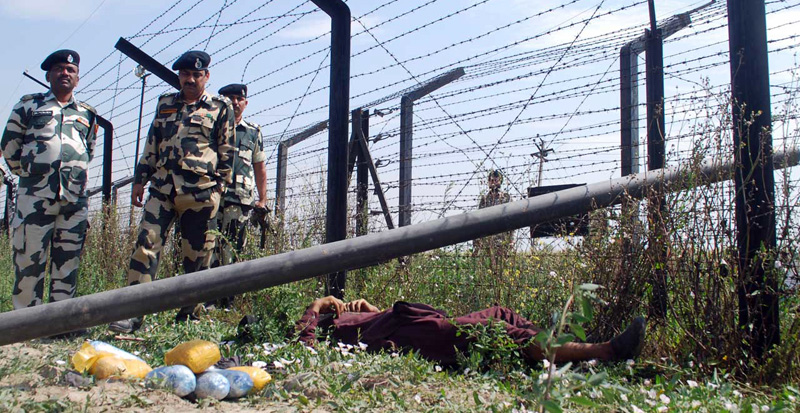
A popular method is to throw pvc pipes across the sometimes-electrified, barbed-wire fences. Packets of heroin are stuffed in the pipes and tied together with rope, one end of which is jutting outside the pipe. The smuggler on the Indian side merely pulls out the drug packets using the rope at his end of the pvc pipe.
For Rs 50,000 a kg, villagers are more than eager to risk heavy jail terms under the Narcotic Drugs and Psychotropic Substances (NDPS) Act. This is usually done during the densely-foggy winter nights, when visibility is as low as a few metres.
The BSF has made several busts near this fence. But, sub-inspector Harpal Singh who mans the post at Dauke, says “Why catch them? We try to finish the drug smugglers when we spot them.”
Harpal Singh was busy supervising farmers crossing the post. The short, white stumps that serve as the ‘international boundary’ zigzag across the land. The Indian fence runs straight southwards and some of the arable land is outside the fence. The government has allowed some farmers to till those lands.
Earlier, this would also be a way of communicating for the drug trade. But, now, passes are issued, movements are monitored and BSF jawans stand guard while the farmers are at work.
There is no Pakistani fence here and the BSF’s counterparts, the Pakistan Rangers, are not visible anywhere along the international boundary, which makes it easier for the Pakistani drug smugglers.
But, that is not all. The NCB, the DRI, and other Central and state agencies believe that smugglers pass on drugs with consignments of cement and other goods that come in from Pakistan.
Even though the border is an integrated checkpost, there are no full-body scanners for the goods trains and trucks that pass through Wagah.
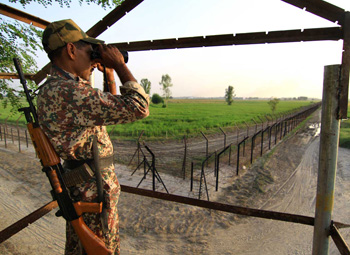
Customs officials just check whether the railway and truck containers have the Pakistani customs seal on them and pass it on. A bust happens only when there is specific information.
“The volume is too heavy for individual checking and though we use sniffer dogs, it does not work when the drugs are packed deep inside containers,” says an NCB official. “The carriages come to the Amritsar railway shed, which is deserted by evening.”
In Amritsar, inspectors Harvinder Pal Singh and Baldev Singh of the SSOC have made a reputation for themselves of being no-nonsense officers. They have the highest record of busts and claim that there is no political interference in their work.
“The NCB has a total staff of four-five officers and have to focus on large consignments and also licensing,” says Harvinder Pal Singh. “We have a strong network, but there is a limit to how much we can seize. There has to be a clampdown on demand and rehabilitation of drug addicts to curb the problem.”
The Political Link
The alleged involvement of SAD MLA Bikram Singh Majithia made national headlines when former cop-turned-drug mafiosi Jagdish Singh Bhola blurted out his name during interrogation.
Politicians such as Congress leader Lali Majithia hint that Bikram Singh is directly involved in the drug trade.
The SAD’s legal counsel said that the party is considering suing some media outlets for maligning Majithia’s name. Majithia is a powerful man, the brother of Union minister Harsimrat Kaur Badal, who is married to Sukhbir Singh Badal, deputy chief minister and the son of Chief Minister Parkash Singh Badal.
The Badals faced a tough time this poll season. First, Election Commission officials made huge drug busts during the campaign. This was followed by Bhola’s confession. Then came Jaitley’s loss, which everyone is blaming on the rampant drug problem.
Halfway through the campaign, the Badals promised a strict clampdown on the drug trade, but the damage was already done.
Congress leaders claim that the mood has already started swinging in their favour. Out of 13 seats, SAD-BJP won six, the Congress won three, while the Aam Aadmi Party won four.
“Out of 10 Assembly seats in Amritsar Lok Sabha constituency, seven are held by SAD and BJP MLAs, including Majithia. It is shameful that a popular leader like Jaitley was defeated because of the SAD’s patronage of the drug trade,” says Lali Majithia.
Bikram Singh is a descendant of Dayal Singh Majithia, the founder of Punjab National Bank and Punjab-based newspaper The Tribune. Bikram Singh’s father, Satyajit Singh Majithia, had sugar mills, which were not doing well until recently, including Saraya Industries in Gorakhpur, Uttar Pradesh.
But the family’s fortunes saw an upswing when the younger Badal married Harsimrat Kaur and Bikram Singh’s proximity to the Badals made him a powerful figure in the party and the state.
The police claim that they have no evidence to link Majithia to the drug trade. But, the whispers blow across Amritsar district, though officials claim it is smoke without fire. A local politician claims that Bikram Singh was seen hosting a Canadabased NRI who is believed to run the drug mafia there. “He would come here each year and an entourage of several SUVs with VIP licence plates would arrive from the Amritsar airport. But, this summer, the drug busts have kept the gentleman away,” he says.
The only link is that of the on-record statement by former DSP Bhola who named Majithia as a patron of the drug trade. However, SAD’s legal counsel rubbished the allegation, saying that Bhola was trying to get himself let off by implicating Majithia.
There are others who claim that Majithia has enough money coming in from government contracts and doesn’t have to soil his hands by protecting the heroin trade.
A Generation Wasted
The drug problem in Punjab has, to put it meekly, spiralled out of control. While the government stumbles, trying to do too little too late, an entire generation may have been lost to what some psychiatrists call an epidemic. While it may seem hyperbolic, the World Health Organisation had classified drug addiction as the biggest killer after aids.
Punjab had ample warning. Another Tehelka report (What hit this land of plenty? by Sai Manish, 13 October 2012) had quoted a sample-group survey that disclosed addiction to be prevalent among 70 percent of the youth.
That was 10 years after specialists such as Dr PD Garg had conducted studies across smaller sample sizes, claiming that addiction was plaguing around 40-50 percent of the youth.
What the government missed out on was that as the problem was prevalent among the youth, it would eventually also affect the police force, which is key to curbing the drug trade.
The conservative estimate, discussed openly, is that at least half of the police force is using drugs and some of them enable trafficking, peddling and other drugrelated crimes.
The government has set up de-addiction camps in several districts and senior officers pose for photo ops with junior officers (in uniform) undergoing treatment at these camps.
Policemen In The Act
In Jalandhar district, constable Dinesh Sharma appears a worried man when the word ‘drugs’ is mentioned. Moments later, Sharma unwraps a scrap of newspaper to exhibit a small, white pill.
“This is a medicine for my colleague’s drug habit,” he says. “He was using heroin for some years. Now, after the crackdown, he decided to quit, but now he refuses to stop using this tablet.”
“This is in the brufen-something group,” he says. “My colleague says his doctor is reducing the dosage. He is young, abhi toh shaadi bhi nahin hui (he is not yet married).”
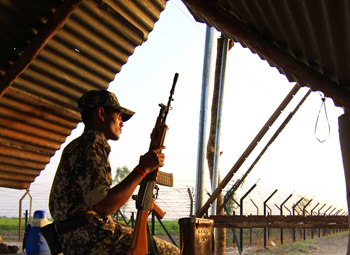
Sharma couldn’t explain why he was carrying the pill that his colleague was supposedly using to treat his drug habit. But he did know the exact street price of commercial heroin, commonly known as ‘brown sugar’ or ‘smack’. He also knew exactly where it could be procured in Jalandhar city or Ludhiana (located 66 km away) as well as villages in between and for how much.
Sharma and his colleague are not alone. Experts estimate that at least 40- 50 percent of the police force is addicted to some form of drug or the other. Twisting the law is an easy means of affording the drug, which people say costs Rs 2,000- 3,000 per gm in Amritsar district. Clearly, inflation has not spared this brown economy too because around 10 years ago, a gm could be procured for as low as Rs 200-500.
In Chandigarh, the police are investigating 62 policemen in drug peddling cases under the NDPS Act. A senior officer says on the condition of anonymity that the intelligence unit is also looking at around 100 other policemen for alleged links with the drug racket.
It is not that the state government is unaware of these problems. They have also been insisting on drug-addicted policemen voluntarily opting for deaddiction treatment. Some have even turned up, risking their anonymity and their jobs. But, the time for superficial shame is long past.
The state government is yet to apprehend any major drug dealer other than former DSP Bhola, who mostly dealt in synthetic drugs. Bhola’s story is akin to the hit television series Breaking Bad, where a high school chemistry teacher started ‘cooking’ crystal meth or ‘crack’ after contracting cancer.
As per police sources, Bhola was dismissed as DSP in 2002, when his name came up during a drug trade-related probe. Someone had named him just like he now names Majithia.
As per police sources, Bhola was dismissed as DSP in 2002, when his name came up during a drug trade-related probe. Someone had named him just like he now names Majithia.
But the dismissal was not lesson enough for Bhola, whom the NCB arrested in 2009 on drug charges. He got bail and was back in business until his arrest last year.
As per sources, Bhola did not handle manufacturing directly but would procure the raw materials by diverting chemicals from the pharmaceutical industry and then collect the final product, which has minimal retail presence in India, but many takers in the US, Canada and parts of Europe. Bhola allegedly learnt how to smuggle and supply crack from international drug smugglers, based in Southeast Asia. His customers were Canadian NRIs.
Bhola learnt how to package drugs to avoid detection from sniffer dogs. One popular method was to stuff it in coffee powder. The strong odour of the coffee prevents the sniffer dogs from sniffing out any drugs from such containers.
Though the police are yet to establish if Bhola was directly engaged in the heroin trade, they claim that he helped drug traders using his network across north India.
Blame it on the Addicts
Following Operation Clean, the jails are teeming with thousands of ‘peddlers’ and counting. Albeit there may be as many or more peddlers in the state but these arrests are now under question.
On a recent visit, the CM found that the jail was full of addicts. Section 39 of the NDPS Act allows addicts, caught with drugs, to opt for detoxification and/or rehabilitative treatment instead of prison terms. In Punjab’s case, since most of those arrested are addicts, several can eventually opt for this relief and the drug lords continue to avoid being investigated and arrested. So, it will soon be “back to square one”.
Let’s look at the drug busts first. So far this year, 416 kg of heroin has been seized. According to police figures, 303 kg was seized by 16 June, but the count is now decreasing.
The police seized around 12 kg of smack, 317 kg of opium, 1.5 million pills and capsules and 60,000 kg of poppy husk.
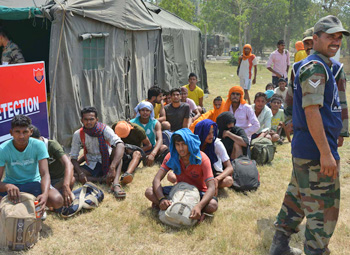
The BSF seized around 322 kg of heroin last year alone. Until last month, it had already nabbed nearly 250 kg of heroin and interdicted (mostly shot down) Pakistani and Indian drug smugglers, the most recent shooting being on 21 May.
This year, the police have registered 7,825 cases under the NDPS Act, of which 4,108 had been registered in less than a month since Operation Clean began (between 20 May and 16 June), for which 4,402 people have been arrested.
But, all these people may not be peddlers as the police claim. Drug users are also being routinely picked up and stashed in jail.
In Rajatal village, Beant Singh, Charanjeet Singh, Heera and another youth were arrested for possession of 110 gm of heroin, a story similar to the pan-Punjab drug busts.
However, in the village, the story was something else.
“They were drinking and stole fans from the local school,” says village chief Sukhjinder Singh. “One of the teachers complained to the police. In the meantime, they confessed before the panchayat and said they would return the fans. The police still picked them up and lodged a drugs-related case on them and framed them with 110 gm of heroin.”
The commercial, impure (30 percent purity) version of heroin costs around Rs 2,500-3,000 per gm. This means that the four youth had drugs worth nearly Rs 3 lakh. So, why would anyone with drugs worth so much steal fans, which would fetch them a few thousands at the most?
At first, villagers denied that the youth were addicts. However, Charanjeet’s brother Ajit said that his brother did use drugs and “occasionally heroin” but denied that he was into the drug trade.
“Charanjeet works as a labourer at a power plant in Nagpur,” says Ajit. “You don’t get heroin there. When he comes home for vacations, he has nothing to do and uses drugs with other youth, who do nothing else but use and deal in drugs.”
There are similar tales of addicts who are picked up across the border villages in Amritsar.
In Moga — the CM’s home district — the police put up signboards in Gurumukhi script outside villages stating that the village was infamous for drugs and anyone entering it would be under suspicion and subject to surveillance.
“The local goons thought that the Badals will look the other way because it is their home district,” claims a SAD insider, adding that the party had a zero tolerance for the illicit drug trade.
But, the drug trade flourished in Moga only until the SAD faced a debacle in the recent General Election.
Since the crackdown, the local media has been flooded with stories of drug busts, seizures and arrests every day. But, an MHA official says that the focus is merely shifting away from the border areas and the state government is nowhere near catching the major drug dealers.
Cross-border Trafficking
When the cross-border trafficking slows down in Amritsar or Tarn Taran, the drugs come in from Jammu & Kashmir. In Punjab, the international border has been demarcated after being ratified by the UN, but in Kashmir, there is no actual boundary because of an ongoing dispute between the two countries.
The drug smugglers prefer to route the drugs that come through Kashmir via the Punjab channel. Last year, a similar consignment bound for Punjab from Kashmir was apprehended by NCB officials near the Uri border.
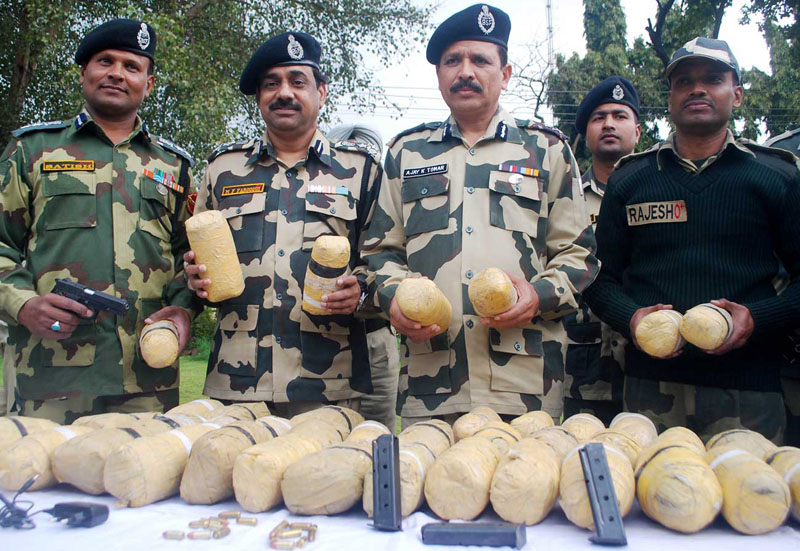
BSF officers and jawans display 41 kg of heroin, worth Rs 205 crore in international market, recovered from two separate incidents, near indo-pak international border out post Daoke and Rattan khurd about 45km from Amritsar on Tuesday.
PHOTO-RAMAN GILL AMRITSAR
“The officials at the border suspected that something was amiss and checked sacks of grain and found 114 kg of heroin,” says an NCB official, currently posted in Punjab after a stint in Uri. “Interrogation revealed that it was bound for Punjab, from where it was to be couriered further to Delhi.”
Adds Inspector Harvinder Pal Singh of the SSOC, “People often blame the Pakistan government and the isi, but there are bigger drug busts in Pakistan than here. In the first six months of 2013, the Pakistan government seized 3,200 kg of heroin. The isi allows drug smuggling only when they have something that they want passed on along with the drugs.”
As is widely known, the cross-border smugglers use Pakistani sim cards, which function up to 50 km inside Indian territory, whereas most Indian services stop functioning within a km away from the border. So, with the drugs, Pakistani sim cards are also passed on and the traffickers use code language. Indian agencies claim that though they don’t have Pakistani phones under surveillance, the Pakistani agencies could easily do so, but their presence along the border fence is negligible except at the Wagah checkpost.
The NCB and the police seem fully aware of how the drugs exchange hands, but no one seemed to know who the kingpins are and how the money changes hands.
Officials are vocal about the role of Africans in couriering drugs through and from Punjab. They reveal that all Africans, including students, in the state are under constant surveillance.
Since 2002, the NCB has registered nearly 50,000 firs and seized nearly two tonnes of heroin in Punjab. The agency’s conviction rate is 72 percent. The state police have a much lesser conviction rate, which the SSOC was not willing to share. But, an officer speculated it to be around 30 percent or less.
The NCB has a lot of data to share, but little details about the kingpins who have continued to operate the drug trade despite the arrest of many mid- and lowlevel dealers.
For example, the NCB knows that 8 percent of Afghanistan’s gdp is based on drugs supplied to India. It has a few suspects among some Pakistani families that live in Lahore, around 30 km from the Indo-Pak border.
The NCB has also caught drugs in rice being exported to Australia and pseudoephedrine, which was dissolved in water and could be crystallised for end use. It had also busted a family travelling in a car with drugs stashed in the vehicle’s roof.
But, here comes the icing on the cake. The government is currently investigating a BSF post commandant (sub-inspector level) who is manning one of the border outposts near Wagah and is in charge of patrolling and manning the gates. Rumour has it that Rs 50,000 was the bribe needed to pass a kg.
The BSF uses night-vision goggles, heat-signature scanners and other methods to keep vigil at the fence, but who will keep a vigil on its men? People in all the villages that Tehelka visited stated (off the record) that the BSF men were complicit in drug trafficking and without BSF knowledge and assistance, it was impossible to smuggle the contraband across the fence.
But BSF jawans argue that they are wary of addicts and ensure they don’t come close to the fence or steal from the posts.
“I see teenagers in the village sniffing industrial glue when they don’t have money, but here almost all of the youth are on some drug or the other. Drugs are freely available,” says a BSF jawan.
It was just 9 am and the sentry leant forward and smiled as he whispered to justify the alcohol reeking in his breath, “I have an alcohol problem, which I will quit when I retire. I drank because we were watching the World Cup football match all night.”
Treating the Disease
Raghvinder Singh of Havalia village scratches at the varicose veins in his calf muscles with his thumb, the only finger left on his right hand. He peers through glassy eyes and his face breaks into a wrinkly smile when asked about what drugs he took. He was being treated at the Swami Vivekanand Drug De-addiction and Treatment Centre at the Medical College in Amritsar.
“Pills,” he says, while the puncture marks near his main vein on both arms and on his calves prove otherwise.
Dr Garg, who heads the de-addiction centre, has been working with drug addicts for more than 25 years. He gives substitutes to heroin users. Other than two or three patients, most of the 40 drug users in Garg’s care appear to have an average age of 23.
There are farmers, bus conductors, students, entrepreneurs, shopkeepers, businessmen, people employed in the private sector, government employees — people from all walks of life.
What was odd was that most of the patients claimed to have been using drugs for only two-three years whereas studies show that the drug problem has been increasing for several years.
One such addict, around 26 years of age, who claimed to be working for the Customs department, says that he was seeking treatment because his wife had left him. He seemed unaware of the state government’s clampdown on the drug racket.
But, it is a fact that the governmentsponsored and private clinics across the state are now teeming with drug users since the bust. Most, however, are waiting for things to tide over.
When asked what he would do once he was out, Devender Singh, a bus conductor, first said he would stay away from drugs and alcohol. But, after a few minutes, he smiled and admitted that he was in treatment just for a ‘servicing’ to bring down his dosage and the harmful effects of the drugs.
“This is not a rehabilitation centre, so it has a limited role,” says Dr Garg. “There are some patients who are from the psychiatry ward here, but I have 40 beds reserved for addicts. Earlier, there were more people coming in for opium and cannabis abuse and then pharma drugs such as morphine, but now the preferred drug is heroin. In the past two years, people have started moving towards intravenous injecting of heroin than smoking it on a foil like they used to earlier because it gives a greater kick.”
Dr Garg had conducted a study between 1996 and 2001 and found that 20-25 percent of the addicts were from the police.
“We have had BSF officers also come in for treatment, but we offer limited support,” he says. “It’s a limited programme that aims at curbing drug use, but does not rehabilitate the addicts. The state government has to treat it like a disease.”
Even at this government-sponsored centre, the price per bed is 250 a day and the prescribed length of treatment is a month, though, as per Dr Garg, many opt out after a week and some stay on in the safety net of the lockdown.
Most of the patients here are from Amritsar city and the rural areas around it, where, says Dr Garg, there can be up to 400 addicts per village, as he has found during his field visits.
“Once an entire family — both the parents and their teenage children — came here for treatment,” says Dr Garg. “It just shows how far Punjab has sunk into drugs. But, there are very few female addicts. If they do come here, we offer them medicines under our opd (outpatient department) programme.”
The state government has promised 220 rehabilitation centres and several big hospitals to deal with the drug menace.
The move towards intravenous injection use poses other health risks because needle sharers have a high risk of contracting HIV, hepatitis or other diseases. Dr Garg even reported several people using tap, river and pond water to dissolve the heroin to inject it, which could also be fatal.
The Central government’s National aids Control Organisation (naco) runs some programmes to prevent HIV infection.
“Jailing drug users simply avoids the problem,” says Simon W Beddoe, harmreduction expert at Alliance India, which works to strengthen community action to prevent HIV infection. “We have effective tools to address the challenges of drug addiction and HIV, and many individuals who face these harms could benefit from such support. This is a global problem that needs renewed leadership, and India can be the leading voice to make harm-reduction interventions the normworldwide.”
Harm reduction does not deal with the core problem of drug addiction. Moreover, both health and policing are in the state list under the Constitution and dealing with the drug racket and rehabilitating addicts are under the aegis of the state government.
On 26 June, the International Day against Drug Abuse and Illicit Trafficking, all international aid agencies and ngos were trying to raise awareness about providing support to drug addicts and not punishing them with jail terms. But Punjab is on a different route altogether, preferring to stow addicts in jails.
As per the 2014 World Drug report filed by the UN Office of Drugs and Crime, 50 percent of drug users who use injections are infected with hepatitis and at least 13 percent have HIV.
A study published by S Panda in the International Journal of std and aids last December shows alarming figures for Punjab. The author conducted tests on 1,155 drug users (who use injections) from Amritsar, Tarn Taran, Batala, Jalandhar and Ludhiana and found 29 percent to be infected with HIV and 49 percent with Hepatitis C. Drug users below 19 years of age showed 12 percent had HIV and 27 percent had Hepatitis C.
Searching for Solutions
A senior MHA official, who is in charge of manning the Indo-Pak border, says that drugs are an old problem in Punjab and wonders why it is more prevalent here than elsewhere.
Experts have speculated that addiction is usually due to a combination of self-defeating learned behaviour and a genetic predisposition.
The MHA official, a Punjab native, says that the state government should perhaps consider conducting research into whether there was a scientific predisposition that led to large-scale addiction. He is critical of the government’s attempts to clamp down on demand and put addicts behind bars.
“For a man with a hammer, every problem will look like a nail,” he says, describing the government’s attempts to curb local demand rather than the massive smuggling and trade in drugs.
“An entire generation of dropouts and unskilled workers has no jobs and lives to look forward to,” he says. “The number of youth from Punjab in the military and paramilitary has gone down rapidly. The government needs to act swiftly and stop political interference in policing to ensure that the drug supply is cut off. And all the addicts need proper rehabilitation.”
Meanwhile, what Dr Garg points out is echoed across the spectrum of drug addiction treatment facilities and theories. De-addiction is merely a substitution followed by reduction of dosage until the bodily dependence is over.
Experts believe that drug dependency is a physical, mental and spiritual disease that requires abstinence from drug use, proper rehabilitation and a social support system. However, like de-addiction, rehabilitation inside a facility is only a temporary solution.
The trick is to stay clean without changing people, places and circumstances considering that addicts hail from all kinds of classes, gender, religion, etc. Quitting drugs rarely works and drug addiction leads to jails, institutions or death.
Most former addicts swear by the meetings and programmes of Narcotics Anonymous (NA), whose chapters are present across the country.
“In the West, the judiciary not only sends former addicts for rehabilitation, but they also ensure that the former addicts regularly attend NA meetings,” say Gurdeedpinder Singh Dhillon, an advocate who practises at the Punjab and Haryana High Court. “The judiciary in Punjab could pioneer successful rehabilitation by ensuring that addicts are sent to actual rehabilitation and serve probation by attending NA meetings.”
Remember Robert Downey Jr before he became Iron Man? Downey Jr had a long tryst with alcohol and substance abuse and the courts offered him several chances of rehabilitation and insisted on him serving probation by attending NA meetings. Eventually, he was on the road to recovery. Punjab could soon start making its own iron men out of the addicts.
~ Ushinor Majumdar

